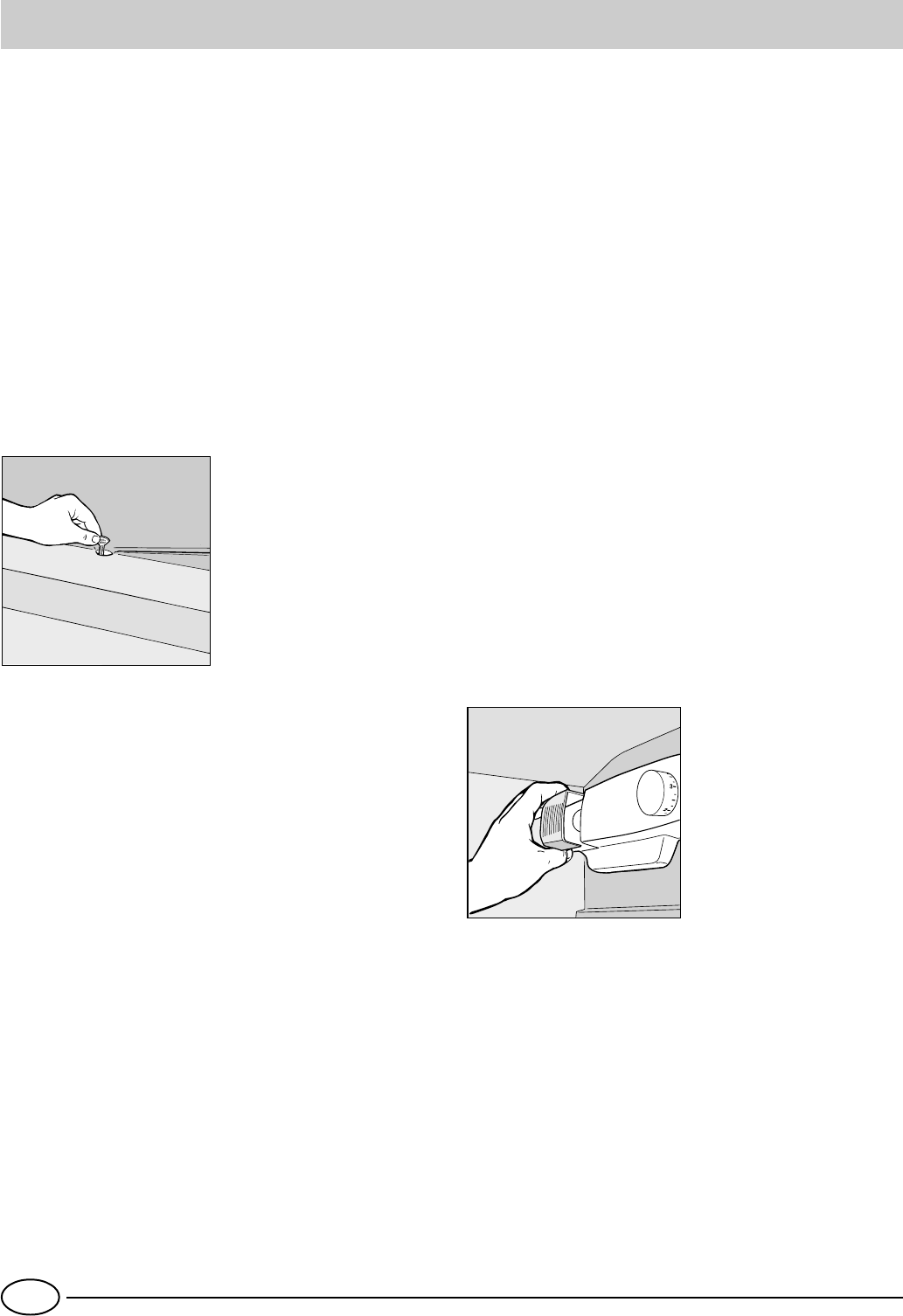
8
GB
Cleaning and Special Maintenance
Before cleaning the refrigerator, switch off and remove
the plug from the socket.
- Your appliance is manufactured with hygienic, odourless
materials. To preserve these characteristics, always use
sealed containers to store foods, in order to prevent spills
which could stain and cause unpleasant, difficult to remove
odours.
- Use a water and bicarbonate solution to clean the appli-
ance. Cean the interior and exterior with a sponge soaked in
warm water and a sodium bicarbonate solution, which is,
among other things, a good disinfectant. If you do not have
any in the house, you can use a neutral soap.
- DO NOT use abrasive detergents, bleach or deterents con-
taining ammonia. NEVER use solvent based products.
- All removable parts should be taken out and soaked in
warm soapy water or detergent. Rinse and dry them thor-
oughly before putting them back in the appliance.
-
When the appliance is not used for a long time
, remember
to clean the interior and dry thoroughly, leave the doors open
to prevent the formation of mould and unpleasant odors.
-
Replacing the light bulb.
The bulb for lighting the interior of
the refrigerator is located at the back of the thermostat box.
When replacing the lamp, unplug the appliance from the elec-
trical socket, unscrew the burned out lamp and replace it
with another with a wattage no higher than 15W (fig. 3).
CARING FOR YOUR APPLIANCE
Before doing any cleaning, disconnect the appliance
from the electricity (by pulling out the plug or turning off
the general switch in your home).
Defrosting
WARNING: do not damage the refrigeration circuit.
Do not use mechanical devices or instruments other than
those recommended by the manufacturer to speed up
the defrosting process.
How to Defrost the Refrigerator
The evaporator defrosts automatically during operation. The
defrost water is collected by the conveyor and is evaporated
externally automatically.
Clean the defrost water drain hole periodically (fig. 2). This
will prevent the water collecting on the bottom of the refrigera-
tor instead of flowing out.
Fig. 3
Fig. 2














